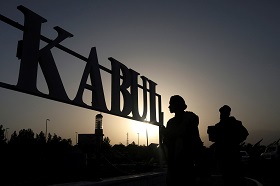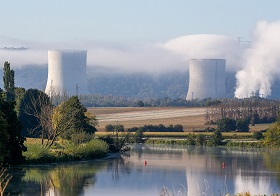Who Will Solve the Kyrgyz–Tajik Energy Crisis?
In
Login if you are already registered
(votes: 2, rating: 5) |
(2 votes) |
Energy policy and geopolitical risk analyst based in The Hague
The two Central Asian states seem to be in a predicament, where increased investment on the energy sector is needed. Based on their energy profile and strategy, it is paramount to examine which options are most promising.
Overall, measuring the risks and opportunities that arise in this major energy crisis of the Central Asian states, Kyrgyzstan possesses greater cooperation flexibility, as it is involved in the majority of the regional cooperation frameworks and maintains great relations with all three key global players in the region. Its significantly high debt, especially in the energy sector, creates major risks and mandates the usage of smaller and more economical energy units.
Tajikistan on the other hand, is involved only in one regional cooperation framework and will have to rely heavily on bilateral agreements. Also, the high technical renewable potential in GBAO presents itself as a blessing and a curse, as the geopolitical implications of providing decentralized energy in a region with separatist views might be major. Nonetheless, the fact that the acceptance towards nuclear still exists and Tajikistan still maintains uranium reserves could be the opening for global powers to exercise their nuclear diplomacy in a relatively less costly manner.
For both countries, geothermal energy can prove to be critical if exploited adequately. It will chiefly require a shift in technical expertise and equipment, which will be costly, but it will solve seasonality and intermittency problems in the future.
Despite being the smallest Central Asian states, they have major significance for all global players. Their proximity to conflict-torn and rare earth metal-rich Afghanistan and in the neighborhood where the Great Game was played for a reason, every global state actor is a major stakeholder and has vested interests to become security provider in the region.
During October, the Toktogul Reservoir, the main supporting pillar of the largest HPP in Kyrgyzstan, reported a record low of 12.3 billion cubic meters of water, which is significantly below the 19-billion cubic meter capacity. This led Deputy Energy Minister Taalaibek Ibrayev to admit that there might not be enough water next year even for agriculture in the region, let alone for hydropower generation.
This directly affects the downstream countries, in particular Tajikistan, a nation that largely relies on hydropower. These two countries lie amidst an unparalleled crisis, as the already existing power outages can only be expected to grow—and fears are in the air even for priority infrastructure such as hospitals. There is, hence, a need for energy investments that will be in line with the COP26 pledges at the same time. Nuclear energy presents itself as a great alternative, with Kazakhstan eyeing a chance of becoming a regional energy leader, but also renewable energy sources should be considered. In addition, contemplating on the heavy debt of the two nations, a financing mechanism would be advised to be put in place so that cost-intensive energy projects don’t push Bishkek and Dushanbe over the edge of bankruptcy. Finally, the recent water conflict on the Ak-Suu River ought to work as a lesson learnt for further cooperation.
Is the Central Asian tap running dry?
Water shortage emerged once again as a major issue for the Toktogul HPP, as in mid-October the actual water concentration of its reservoir fell to 12.3 billion cubic meters (bcm). November saw the water concentration going even lower, at 11.5 bcm, the lowest since 2008. Reflecting on this major change, Kyrgyz Deputy Energy Minister Taalaibek Ibrayev warned of potential water shortage to be able to perform basic agricultural functions for the downstream countries. Tajikistan makes great use of the Syr Darya river, which connects with the Naryn river, home to the Toktogul reservoir. The Farkhad and Kayrakkum dams are an important source of hydro energy, while irrigation projects assist heavily the Tajik agriculture sector. The constantly growing water stress that is being seen as an effect of climate change and human activities is increasing the burden that the electricity sector in Kyrgyzstan and Tajikistan already has. Rolling blackouts were already a reality, and the situation is getting worse now, as blackouts in Tajikistan include daytime, during school time and business hours, whereas the National Electric Holding Company in Kyrgyzstan is issuing instructions to abstain from going out during night time, with the objective of cutting power in public spaces during these hours. The two Central Asian states seem to be in a predicament, where increased investment on the energy sector is needed. Based on their energy profile and strategy, it is paramount to examine which options are most promising.
Are renewables the solution to everything?
After pledges by President Shadyr Japarov in COP26 regarding carbon neutrality by 2050 and active participation by Emomali Rahmon in pledges related to the glacier preservation, it is safe to assume that their energy strategy will include clean means of energy, and rightfully so. Both countries have proven to have significant solar and wind technical potential. Kyrgyzstan has demonstrated up to 843 kw/m2 of solar radiation in regions under study, with the Issyk-Kul and Naryn regions depicting the strongest solar potential, whereas great wind potential is present in the Issyk-Kul, Chuy and Osh region. As far as Tajikistan is concerned, Gorno Badakhstan Autonomous region is considered a solar hotspot, while at the same time the whole country can be observed as a great investment for wind energy. This formulates much interest and presents a great opportunity for both Central Asian states, as these types of renewable energy units can be relatively small, constituting small investments which can attract small-scale regional and international players.
The main issue here, however, lies in the decentralized character of wind and solar energy. This would require unbundling and potentially partly privatization of a heavily centralized and state-owned system operator and regulatory framework. Political will is the key element in this sector. The second main problem with decentralization is security concerns. GBAO, for example, maintains a very fragile balance with Dushanbe and the aftermath of the Taliban takeover in Afghanistan is putting extra pressure in the Tajik society, affecting regions such as GBAO. Finally, the exchange of fire and the conflict that resulted in the loss of many lives near the Ak-Suu River, in a region with great wind potential, also creates a surge in the risks of a potential investment there.
Nuclear energy bringing numerous opportunities, but also risks and questions
Central Asia was always considered a uranium hotspot, as the Soviet Union was utilizing its uranium mines to provide fuel for the operation of its power plants. Kazakhstan alone possesses 12% of the world’s uranium reserves and it was on 3 September, 2021, that President Kasim-Zhomart Tokayev pointed out the significance of nuclear power via his intention to build a nuclear power plant (NPP). This does not come as a surprise, as Nur-Sultan faced severe energy stress, in particular due to the blockchain frenzy that exists in the country, but also due to the increase of energy need, which will exceed 2.5 thousand MW in the South of the country, because of infrastructure development and growth population. Can this strategy by a key regional actor bring a nuclear era in the region? What can Bishkek and Dushanbe do towards that direction?

Eight Principles of the “Greater Eurasian Partnership”
Kyrgyzstan has been a major uranium exporter, with more than 9000 tons of uranium extraction per year, with the most abundant source being the Mailu-Suu mine in the Jalal-Abad region, while for Tajikistan several uranium mining sites included Taboshar, Adrasman, Uigur and Tyuya-Muyun. These mines, as mentioned, served as fuel providers for the Soviet nuclear power plants and hence were closed after 1995. Nonetheless, very little remediation took place, which led to the conceptualization of the Environmental Remediation Account for Central Asia, jointly by the EU and the EBRD. The plan was adopted in 2015 and there was the provision of EUR210million expenditure for the complete remediation of the sites. The direct and indirect damage caused by the uranium legacies seriously affected Bishkek which, in 2019, issued a complete ban on uranium mining and exploration, but also on uranium and thorium imports, but it did not have the same effect in Dushanbe. Tajikistan moved forward with a nuclear cooperation agreement with Russia in 2017, which included, among others, design, construction, operation and decommissioning of research reactors, but also use of nuclear technology in industry. Different strategies are advised for each country based on that.
For Kyrgyzstan there is little room for maneuver. The only way to benefit by a potential nuclear revolution in the region is a favorable agreement with Kazakhstan, under the Eurasian Economic Commission (EEC) Energy & Infrastructure department, for the use of electricity generated by its NPP’s. Nevertheless, the main issue in the first place is increasing energy security and, while the construction of an NPP in Kazakhstan will increase regional energy security, it will still result in Bishkek relying on imports.
Tajikistan could enjoy higher flexibility. The agreement between Moscow and Dushanbe on nuclear can be expanded and Rosatom can provide the technical expertise and capacity building, but also the equipment for the operation of nuclear power plants. Initially, Tajikistan could rely on fuel imports, either from Kazakhstan or Russia, before recommencing exploitation of its own resources.
Competition to the Rosatom reactors can be placed by the new Chinese Molten Salt Reactors (MSR). MSR’s promise to reduce size and increase efficiency in reactors, but have not been tested yet in large-scale, and regions like the EU have set very specific standards for NPP construction and face internal conflicts over nuclear power. Central Asia could prove to be the starting point for Beijing’s nuclear innovation to gain increasing acceptance and position itself among the other prevalent technologies. China enjoys great relations with Tajikistan in virtually all sectors and could expand to this one as well, through a nuclear agreement.
The TUTAP saga
The Turkmenistan-Uzbekistan-Tajikistan-Afghanistan-Pakistan (TUTAP) integrated electricity grid started being materialized in 2009 in an effort from the ADB to solve connectivity and energy security issues in the region. However, the essence of the project in the first place was to electrify Afghanistan and Pakistan that possess a weak energy and electricity grid, which will be ever more challenging since the upstream countries face electricity outages themselves. In addition, the still unresolved internal conflict in Kabul means potential malfunction of the framework, especially as far as the Tajik-Afghan relations are concerned. A combination of these factors makes the project highly unreliable and calls for other interconnectivity projects to take place.
As mentioned, there have been a lot of serious concerns about the viability of debt surrounding the two countries. For Kyrgyzstan, speculation over potential default because of the debt height has been rising, as external debt rose to $5 billion in 2021, over 40% of the GDP, with the energy sector being responsible for a debt higher than 20% of the GDP. Tajik external debt has soared into over $3billion in 2020, with most energy utilities being among the ones that carry the heaviest burden. Reflecting on the accumulated debt, in particular on the energy sector, the main challenge continues to be attracting investments and detecting the feasibility of new energy projects. A potentially promising way is deemed to be through financing or trade schemes by international institutions. It presents great interest, therefore, to examine the international institutions that the two countries are a part of and their major state actors, so that potential synergies and schemes are identified
The time for EAEU (EEC) to shine

Prospects and Scenarios for Afghanistan: Russian and Chinese Interests
The Eurasian Economic Union (EAEU), a Russian-led bloc that aims towards the further integration of the region, has constantly depicted the willingness to form a common financial framework with the aim of supporting all member states. Timur Zhaksylykov, Minister of Economy and Financial Policy, has identified the common financial market as a priority for the EAEU that will enable further investment between the member states. At the end of the 2020, Zhaksylykov pointed out again to the urgency of adopting such a framework to deal with the pandemic crisis. Russia could prove to be a vital state actor in this energy crisis. While it cannot provide aid to Tajikistan through this framework, Moscow can pursue its nuclear diplomacy through Rosatom and its counterpart in Nur-Sultan, Kazatomprom. Russia can provide the technical foundation and the EAEU as a whole can support, through a common investment scheme, in the construction of a NPP that will serve the increased interconnectivity and regional energy integration. The main issue here can be found in the recurring minor conflicts, in particular regarding border controls that were not appropriate according to the free trade nature of EAEU. Putting energy integration into the discussion might result in indicating a “package deal” that will eventually include a full resolution to the free-trade issues.
Promising strategy from CAREC
The Central Asian Regional Economic Cooperation program (CAREC) is a very interesting case of an international organization, as it has been an initiative from the Japan and US-led ADB, but China is the main global player that is also a CAREC member. CAREC has proposed a strategy for further RES penetration on the energy mix, additional interconnection between member states, but also unbundling and privatization of the energy sector. The first two points can be achieved with China as the main stakeholder, as investments in nuclear energy in Kazakhstan, Mongolia and Tajikistan, renewables for the rest of Central Asia and in high voltage transmission lines for interconnectivity.
The emerging Turkic Council
Due to the financial profiles of its member states, the Turkey-led Turkic council has always championed energy cooperation and integration. During the February 2021 conference, all member states, Kyrgyzstan being among them, echoed the need for further energy cooperation and integration, with the Turkish Energy Minister signaling the usage of renewable and alternative energy sources. Turkey itself has recently moved forward with the inauguration of the construction of the Akkuyu NPP near the city of Mersin, which is projected to be completed in 2023. Turkey can be a great financial supporter for nuclear energy and interconnectivity in Central Asia and between Kazakhstan-Kyrgyzstan in particular. This presents incentive for Tajikistan to get involved in cooperation with the Turkic council, albeit not being a Turkic state itself.
In both clean energy alternatives, China seems to hold the advantage of more modernized solutions, such as the MSRs for nuclear, as well as solar and wind technologies, but also green hydrogen to complement them. The main drawbacks revolve around the significant shift in regulatory frameworks and the compete unbundling, but also the capacity building, which will prove to by very challenging for countries that do not show willingness to move away from the traditional centralized energy system option.
That is where Russia can have an advantage. Rosatom has already been operating with capacity building and technical support across Eurasia and its technology is tested and trusted by CIS countries. In addition, as both nuclear and decentralized options will require focus on the security sector, Moscow is the main security provider of the region and will largely benefit from such progress on the energy sector and could see the opportunity to increase its defense & security presence in the region.
Turkey as an emerging power currently has very little stakes in the region, but can have great gains, as it has been operating both on the nuclear, hydro and renewables sectors but also on the militarization of its diplomacy, which could make Ankara a great energy, but also security partner. Its main issues at the moment are related to internal financial problems and the political instability that these might bring, making Turkey the least reliable partner of the 3.
The path forward
Overall, measuring the risks and opportunities that arise in this major energy crisis of the Central Asian states, Kyrgyzstan possesses greater cooperation flexibility, as it is involved in the majority of the regional cooperation frameworks and maintains great relations with all three key global players in the region. Its significantly high debt, especially in the energy sector, creates major risks and mandates the usage of smaller and more economical energy units.
Tajikistan on the other hand, is involved only in one regional cooperation framework and will have to rely heavily on bilateral agreements. Also, the high technical renewable potential in GBAO presents itself as a blessing and a curse, as the geopolitical implications of providing decentralized energy in a region with separatist views might be major. Nonetheless, the fact that the acceptance towards nuclear still exists and Tajikistan still maintains uranium reserves could be the opening for global powers to exercise their nuclear diplomacy in a relatively less costly manner.
For both countries, geothermal energy can prove to be critical if exploited adequately. It will chiefly require a shift in technical expertise and equipment, which will be costly, but it will solve seasonality and intermittency problems in the future.
Despite being the smallest Central Asian states, they have major significance for all global players. Their proximity to conflict-torn and rare earth metal-rich Afghanistan and in the neighborhood where the Great Game was played for a reason, every global state actor is a major stakeholder and has vested interests to become security provider in the region.
References:
Baybagyshov, E. & Degembaeva, N. (2019). Analysis of usage of the renewable energy in Kyrgyzstan
Reuters. (2021, 02 November). Leaders link tackling water and climate at COP26 as crisis looms. Retrieved from: https://www.devdiscourse.com/article/business/1792131-leaders-link-tackling-water-and-climate-at-cop26-as-crisis-looms
Shvedov, G. et al. (2018). Analysis and Evaluation of Potential of Renewable Energy Resources of Republic of Tajikistan. IEEE.
Sadvakassov, D. (2021, 27 October). Nuclear Power Plants in Kazakhstan: Advantages and Risks. Central Asian Bureau for Analytical Reporting Retrieved from: https://cabar.asia/en/nuclear-power-plants-in-kazakhstan-advantages-and-risks
Botpaev, R. et al. (2011, August). Renewable Energy in Kyrgyzstan: State, Policy & Educational System.
IAEA. (2018). Strategic Master Plan: Environmental Remediation of Uranium Legacy Sites in Central Asia.
World Nuclear News. (2021, 27 January). Uranium in Kyrgyzstan. Retrieved from: https://world-nuclear.org/information-library/country-profiles/countries-g-n/kyrgyzstan.aspx
World Nuclear News. (2017, March). Uranium in Tajikistan. Retrieved from: https://world-nuclear.org/information-library/country-profiles/countries-t-z/tajikistan.aspx
EBRD. Environmental Remediation Account for Central Asia (ERA). Retrieved from: https://www.ebrd.com/what-we-do/sectors-and-topics/nuclear-safety/era.html
IEA. Kyrgyz Republic Energy Profile
UCA’s Mountain Societies Research Institute. Geothermal energy helps year-round farming in Tajikistan. Retrieved from: https://www.akdn.org/project/geothermal-energy-helps-year-round-farming-tajikistan
World Nuclear News. (2021, February). Uranium in Kazakhstan. Retrieved from: https://world-nuclear.org/information-library/country-profiles/countries-g-n/kazakhstan.aspx
Eurasian Economic Commission. (2021, 02 February). Timur Zhaksylykov: "Forming the EAEU common financial market is a priority of integration interaction". Retrieved from: http://www.eurasiancommission.org/en/nae/news/Pages/01-02-2021-01.aspx
Eurasian Economic Commission. (2020, 18 November). EAEU and Central Asian countries strengthen cooperation to support sustainable economic recovery. Retrieved from: http://www.eurasiancommission.org/en/nae/news/Pages/18-11-2020-02.aspx
Turkic Council. (2021, 24 February). Energy Ministers of the Turkic Council identified priorities and prospects for cooperation at the First Ministerial Meeting. Retrieved from: https://www.turkkon.org/en/haberler/energy-ministers-of-the-turkic-council-identified-priorities-and-prospects-for-cooperation-at-the-first-ministerial-meeting_2192
Koseoglu, S. (2021, 10 March). Turkey’s nuclear power dilemma. Al Jazzeera. Retrieved from: https://www.aljazeera.com/news/2021/3/10/turkeys-nuclear-dilemma
Central Asian Regional Economic Cooperation Program. CAREC Energy strategy 2030
Imanbekova, N. (2020, 04 November). Could the growing national debt of Kyrgyzstan Lead to default? Central Asian Buraeu for Analytical Reporting. Retrieved from: https://cabar.asia/en/could-the-growing-national-debt-of-kyrgyzstan-lead-to-default
Standish, R. (2021, 27 February). How will Kyrgyzstan pay its huge debts to China? Radio free Europe - Radio Liberty. Retrieved from: https://www.rferl.org/a/how-will-kyrgyzstan-repay-its-huge-debts-to-china-/31124848.html
CABAR.asia. (2021, 17 February). Living in debt: To whom and how much does Tajikistan owe? Central Asian Bureau for Analytical Reporting. Retrieved from: https://cabar.asia/en/living-in-debt-to-whom-and-how-much-does-tajikistan-owe
Solar Resource Maps of Kyrgyzstan. Retrieved from: https://solargis.com/maps-and-gis-data/download/kyrgyzstan
Solar Resource Maps of Tajikitsan. Retrieved from: https://solargis.com/maps-and-gis-data/download/tajikistan
Putz, C. (2016, 10 May). TUTAP energy project sparks political infighting in Afghanistan. The Diplomat. https://thediplomat.com/2016/05/tutap-energy-project-sparks-political-infighting-in-afghanistan/
(votes: 2, rating: 5) |
(2 votes) |
Current preliminary pencil sketches of the complex Eurasian structure of the future contain more questions than answers
Nuclear Energy is not Dead! Understanding the Drivers Underpinning the Ongoing Nuclear RenaissanceNuclear power is fundamental to the efforts to tackle global warming, at least for the time being, and appears to be the much-needed gateway to space colonization.
Prospects and Scenarios for Afghanistan: Russian and Chinese InterestsCountering common threats requires that Russia and China are on the same page
A Renaissance of Fossil Fuels: Consequences of Europe’s Energy Market PanicHoping that winter 2021–2022 will come to be mild






